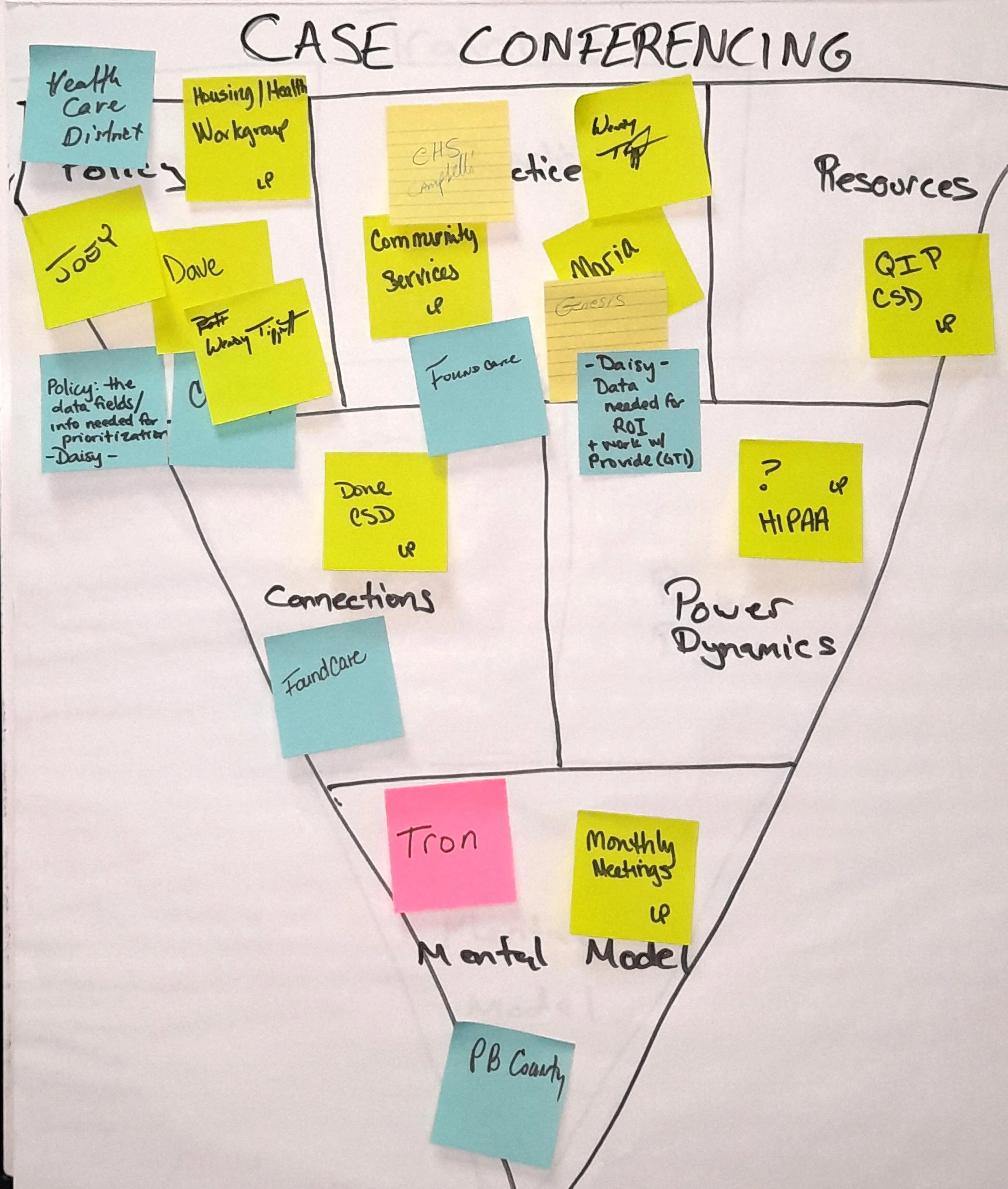Palm Beach County 100-Day Dual-Sector Challenge: Housing and Healthcare
The Challenge
In 100 days, 60 individuals living with HIV and experiencing homelessness will be safely and stably housed and linked to care, with equitable exits based on Gender, Race/Ethnicity, Age, and Household Type.
Baseline
12 people living with HIV were housed in the 100 days prior to the Challenge.
The Outcome
By combining the various expertise of those with lived experience, the homelessness response system, and the healthcare sector, the 100-Day Challenge team was able to double their previous housing rate for those living with HIV and create ongoing, durable connections and data-sharing processes between homelessness and healthcare providers. These relationships will allow Palm Beach County to more effectively serve this population and spread these insights to other populations with specific health and housing needs.
Results
Connected 28 people living with HIV to safe and stable housing (200% of baseline); met equity goals around race and household type
Key innovation developed to achieve their goal:
Data sharing between homeless response and healthcare systems
Palm Beach County Ryan White Program (contracting local HIV/AIDS service providers)
Palm Beach County Homeless Services Program
How did this data sharing work?
They gave one person from the Ryan White program and one person from the homeless services program the ability to see into each other’s systems.
They collaborated to find the overlap between the list of people in PBC experiencing homelessness and the list of people in PBC receiving services from the County for HIV treatment.
They discovered that the combined, deduplicated list contained more than 345 people, many of whom were not connected to both systems (meaning they were only receiving homeless services or only receiving healthcare services.)
Why does this innovation transform how the system works?
Each of these systems offers housing services and support, but they don’t traditionally work together to ensure that they are not duplicating or missing services.
The County had begun some data collaboration prior to the beginning of the Challenge but was able to implement systematic data sharing during the Challenge.
Through cross-system collaboration and data sharing, the 100-Day Challenge team was able to look at the healthcare and housing resources as “one big pot”, and determine the best use of those resources through case conferencing.
In practice, this happened through weekly joint case conferencing founded on data sharing, which allowed the team to use resources more effectively; for example, someone who was waiting for housing support from the homeless response system may be a better fit for Ryan White support, which could be offered more quickly.
The Release of Information form allowed the homeless response staff to share information on services with the healthcare staff but protected sensitive medical information from being shared.
By cooperating on client support, there were more touchpoints with each client; consistent contact with the healthcare system to manage HIV offers an opportunity for continuity of homeless response wraparound services.
Partnering with healthcare allowed the homeless response system, in several instances, to re-engage with healthcare clients in need of housing support who did not qualify or were waiting for Ryan White services.
What’s Next?
The Challenge team started seeing the homeless services and healthcare providers as a cohesive system rather than a collection of individual entities; they will continue developing those intra- and intersystem relationships, spreading beyond the Challenge team members to colleagues and partners.
The success of that data sharing has prompted the County to consider creating a data analyst that sits between the two systems and acts as the integrator, protecting sensitive information while increasing a client’s chances of accessing safe and stable housing.
Sustaining Priorities
Dual-system training on healthcare resources and homelessness resources: They will be expanding this training to include non-traditional resources, such as employment and education services. The training will create a library of recorded training for new hires and periodic refreshers.
Case conferencing between the housing and healthcare systems: Since traditional case conferencing can’t meet all of their needs as it is too limited in focus, a new case conferencing practice will allow them to better prioritize efforts for this population, including getting more specific about each client’s necessary services.
What barriers remain?
Capacity and staffing.
Spreading to the larger community, especially getting them to buy into training.
Potential prioritization challenges, given limited resources.




